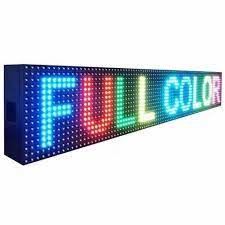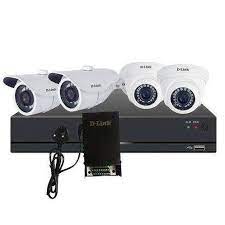LED Display: Revolutionizing Visual Communication
In today’s fast-paced world, effective communication is key. Whether it’s advertising, information dissemination, or entertainment, visual displays play a crucial role in capturing attention and conveying messages. One technology that has transformed the way we communicate visually is LED display.
LED (Light Emitting Diode) displays have revolutionized the world of signage and visual communication with their vibrant colors, high brightness, and versatility. These displays consist of an array of small LED modules that emit light when an electric current is applied to them. The combination of these modules creates a seamless display surface capable of showcasing captivating visuals.
One of the most significant advantages of LED displays is their exceptional brightness. With their high luminosity, LED panels can deliver vivid and eye-catching visuals even in broad daylight or brightly lit environments. This feature makes them ideal for outdoor advertising billboards, sports stadiums, concert venues, and other large-scale events where visibility is crucial.
LED displays also offer superior color reproduction. With a wide color gamut and excellent color accuracy, these displays can showcase images and videos with stunning clarity and lifelike vibrancy. This makes them perfect for retail stores, airports, museums, and other locations where captivating visuals are essential for engaging customers or visitors.
Furthermore, LED displays are highly versatile in terms of size and shape. They can be customized to fit various architectural designs or specific requirements. Whether it’s a curved screen that wraps around a building facade or a giant video wall inside a shopping mall, LED displays can be tailored to create immersive visual experiences that leave a lasting impression on viewers.
Another notable advantage of LED displays is their energy efficiency. Compared to traditional display technologies like LCD (Liquid Crystal Display), LEDs consume significantly less power while delivering brighter images. This energy-saving characteristic not only reduces operational costs but also contributes to environmental sustainability by minimizing carbon footprint.
Moreover, LED displays are known for their durability and longevity. LED modules have a longer lifespan compared to other display technologies, ensuring extended usage without frequent replacements. This durability makes them suitable for outdoor installations, where they can withstand harsh weather conditions and maintain optimal performance over time.
LED displays have also embraced advancements in control systems and connectivity. With the integration of advanced software and hardware solutions, LED displays can be remotely managed and controlled, allowing for seamless content updates and scheduling. This feature is particularly useful for digital signage networks that require dynamic content management across multiple locations.
In conclusion, LED displays have transformed visual communication by offering exceptional brightness, vibrant colors, customization options, energy efficiency, durability, and advanced control capabilities. Whether it’s for advertising purposes, information dissemination, or creating immersive experiences, LED displays have become the go-to choice for businesses and organizations seeking to captivate their audiences in a visually impactful way. As technology continues to evolve, we can expect even more exciting developments in LED display technology that will further enhance our visual communication experiences.
9 Essential Tips for Choosing the Right LED Display
- Choose a display with a high resolution and refresh rate for optimal performance.
- Consider the viewing angle of the display when selecting one for your application.
- Make sure the LED display is compatible with your computer or other device before purchasing it.
- Check that the LED display has adequate brightness and contrast levels to suit your needs.
- Ensure that you have enough space to install and use an LED display comfortably in your environment.
- Look out for features such as color calibration, adaptive backlight dimming, and other image-enhancing technologies when selecting an LED display for your project or application.
- Be sure to purchase an LED display from a reputable manufacturer who offers good customer service and technical support if needed in future years after purchase date .
- Research what type of warranty is offered by the manufacturer before making a purchase decision on an LED Display .
- Take into account any additional costs associated with powering, cooling, mounting hardware or accessories when budgeting for an LED Display .
Choose a display with a high resolution and refresh rate for optimal performance.
When it comes to selecting an LED display, one crucial factor that significantly impacts its performance is the resolution and refresh rate. These two specifications determine the clarity and smoothness of the visuals displayed on the screen.
Resolution refers to the number of pixels that make up the display. The higher the resolution, the more detailed and sharper the images and videos will appear. Opting for a display with a high resolution ensures that your content is presented with utmost clarity, making it visually appealing and engaging for viewers.
Similarly, the refresh rate plays a vital role in delivering smooth and fluid visuals. It refers to how many times per second the display updates its image. A higher refresh rate reduces motion blur, resulting in crisp and seamless transitions between frames. This is particularly important when showcasing fast-paced content such as sports events or action-packed videos.
By choosing an LED display with a high resolution and refresh rate, you can ensure optimal performance that captivates your audience. Whether it’s for advertising, presentations, or entertainment purposes, investing in a display with these specifications will elevate the visual experience and leave a lasting impression on viewers.
It’s worth noting that while displays with higher resolutions and refresh rates offer superior performance, they may come at a higher cost. Therefore, it’s essential to consider your specific requirements and budget when making a decision. However, if you aim for top-notch visual quality that stands out from the competition, investing in a display with high resolution and refresh rate is undoubtedly worth considering.
In conclusion, when selecting an LED display for your needs, prioritize choosing one with a high resolution and refresh rate. This combination ensures exceptional clarity, detail, smoothness, and overall performance of your displayed content. By making this choice wisely, you can create impactful visual experiences that capture attention and deliver your message effectively.
Consider the viewing angle of the display when selecting one for your application.
Consider the Viewing Angle: Enhancing Visual Experience with LED Displays
When it comes to selecting an LED display for your application, one crucial factor to consider is the viewing angle. The viewing angle refers to the maximum angle at which viewers can comfortably see the displayed content without any loss in image quality or color accuracy.
The viewing angle of an LED display plays a significant role in ensuring an optimal visual experience for all viewers, regardless of their position relative to the screen. It determines how effectively the content is perceived from different angles and distances, making it essential for various applications such as advertising, digital signage, or information displays.
A wide viewing angle ensures that the displayed content remains clear and vibrant even when viewed from off-center positions. This is particularly important in scenarios where viewers may be moving around or looking at the display from varying angles. By considering the viewing angle, you can ensure that your message or information reaches a broader audience and maintains its impact.
For example, in a retail environment, where customers may approach a digital signage display from different directions, a wide viewing angle allows everyone to have an equally engaging experience. Similarly, in large venues like sports stadiums or concert halls, where spectators are scattered across various seating sections, a wide viewing angle ensures that everyone can enjoy a clear view of live video feeds or event updates.
On the other hand, if an LED display has a limited viewing angle, viewers who are not directly facing the screen may experience reduced image quality or color distortion. This can lead to frustration and diminish the effectiveness of your intended message.
To ensure you select an LED display with an appropriate viewing angle for your application, consider factors such as screen size and placement. Larger screens generally require wider viewing angles to accommodate viewers at greater distances. Additionally, consider whether your display will be mounted vertically or horizontally and whether it will be viewed primarily from one side or multiple sides.
By understanding and considering the viewing angle of an LED display, you can make an informed decision that enhances the visual experience for your intended audience. Whether it’s for advertising, information dissemination, or creating engaging displays, selecting a display with an optimal viewing angle ensures that your content is visible and impactful from every vantage point.
Make sure the LED display is compatible with your computer or other device before purchasing it.
When it comes to purchasing an LED display, compatibility is a crucial factor to consider. Before making a purchase, it is essential to ensure that the LED display you are interested in is compatible with your computer or other devices.
Compatibility issues can arise from differences in connectivity options, resolution support, and software requirements. To avoid any inconvenience or frustration, it is advisable to thoroughly check the specifications of the LED display and compare them with the specifications of your computer or device.
Firstly, consider the connectivity options. Most LED displays offer various input ports such as HDMI, DisplayPort, VGA, or DVI. Make sure that the LED display has a compatible input port that matches the output port on your computer or device. This will ensure a seamless connection and allow for optimal performance.
Secondly, pay attention to resolution support. Different LED displays have different native resolutions and aspect ratios. It is important to choose an LED display that supports the resolution output of your computer or device. Mismatched resolutions can result in distorted or stretched images, compromising the visual quality.
Lastly, consider any specific software requirements for operating the LED display. Some displays may require specific drivers or software installations to function correctly. Ensure that your computer or device meets these requirements and can support the necessary software before making a purchase.
By taking these compatibility factors into account before purchasing an LED display, you can save yourself from potential headaches and ensure a smooth and hassle-free experience. Investing time in checking compatibility will help you make an informed decision and ensure that your new LED display seamlessly integrates with your existing setup for optimal performance and visual enjoyment.
Check that the LED display has adequate brightness and contrast levels to suit your needs.
When it comes to choosing an LED display, one crucial factor to consider is the brightness and contrast levels it offers. These two elements play a significant role in ensuring that your display is visible and impactful in various environments.
Brightness refers to the intensity of light emitted by the LED display. It determines how well the content on the screen stands out, especially in well-lit areas or under direct sunlight. If you plan to use the display outdoors or in brightly lit indoor spaces, it’s essential to check that it has adequate brightness levels. A display with high brightness ensures that your messages are clear and easily readable, even in challenging lighting conditions.
On the other hand, contrast ratio determines the difference between the brightest and darkest parts of an image displayed on the screen. A higher contrast ratio provides more depth and detail, enhancing the visual experience for viewers. It ensures that text appears sharp, images are vibrant, and videos have excellent clarity. By having a display with suitable contrast levels, you can ensure that your content stands out and captures attention effectively.
It’s important to assess your specific needs before selecting an LED display. Consider factors such as where you plan to install it and the surrounding lighting conditions. If you intend to use it for outdoor advertising or events, opt for a display with high brightness levels to combat sunlight glare and ensure visibility from a distance. For indoor applications like retail stores or museums, choose a display with appropriate brightness and contrast ratios that complement the ambient lighting.
By checking that your LED display has adequate brightness and contrast levels to suit your needs, you can ensure that your visual communication efforts are successful. It allows you to deliver impactful messages, capture attention effectively, and create immersive experiences for your audience. So remember, take into account these important factors when selecting an LED display for optimal performance in any environment.
Ensure that you have enough space to install and use an LED display comfortably in your environment.
When it comes to installing an LED display, one crucial factor that often gets overlooked is the available space. Ensuring that you have enough space to install and use an LED display comfortably in your environment is essential for optimal viewing experience and functionality.
Firstly, consider the physical dimensions of the LED display. Measure the area where you plan to install the display and ensure that it can accommodate the size of the LED screen without any obstructions or overcrowding. Take into account factors such as wall space, ceiling height, and any surrounding structures that may affect visibility.
Additionally, consider the viewing distance. LED displays come in various pixel pitches, which determine how close or far viewers need to be to read or view content comfortably. If you are installing an LED display for advertising purposes or information dissemination in a large public area, ensure that viewers can see and comprehend the content from a reasonable distance without straining their eyes.
Moreover, think about accessibility and user interaction. If your environment requires user engagement with the LED display, such as touchscreens or interactive elements, make sure there is enough space for people to approach and interact with the display comfortably. Consider factors like queuing areas or seating arrangements if applicable.
Furthermore, take into account any potential obstructions or environmental factors that may affect visibility. Ensure that there are no objects blocking the line of sight to the LED display from various angles. Consider lighting conditions as well – excessive glare from sunlight or bright indoor lighting can diminish visibility and readability of the content on the screen.
Lastly, consider maintenance and servicing requirements. Leave ample space around the LED display for technicians or service personnel to access it easily for routine maintenance or repairs if needed. This will ensure smooth operation and minimize downtime.
By taking these factors into consideration, you can ensure that you have enough space to install and use an LED display comfortably in your environment. This will not only enhance visual experience but also optimize functionality and user interaction with the display. So, before you embark on installing an LED display, make sure to plan and allocate sufficient space for a seamless and enjoyable experience for both you and your audience.
Look out for features such as color calibration, adaptive backlight dimming, and other image-enhancing technologies when selecting an LED display for your project or application.
Enhancing Visual Excellence: Key Features to Consider in LED Displays
When it comes to selecting the perfect LED display for your project or application, there are several important factors to consider. Among these, features that enhance image quality and visual excellence should be at the top of your list. Let’s take a closer look at some key features to watch out for when choosing an LED display.
Color calibration is a crucial feature that ensures accurate and consistent color reproduction on the display. With color calibration technology, the LED display can achieve precise color accuracy, allowing your visuals to appear vibrant and true-to-life. This is particularly important for applications where color fidelity is critical, such as graphic design, advertising, or video production.
Adaptive backlight dimming is another essential feature that contributes to superior image quality. This technology adjusts the brightness of individual LEDs in response to the content being displayed. By dynamically controlling backlight intensity, adaptive backlight dimming enhances contrast, improves black levels, and ultimately delivers more detailed and realistic images on the LED display.
Furthermore, image-enhancing technologies like motion interpolation or frame rate control can greatly enhance the visual experience. These technologies work by analyzing and interpolating frames in real-time to reduce motion blur and create smoother transitions between frames. This results in sharper images with reduced flickering or judder, making them ideal for applications involving fast-paced content such as sports broadcasts or action-packed movies.
Another feature worth considering is HDR (High Dynamic Range) support. HDR technology expands the range of colors and brightness levels that an LED display can reproduce. By incorporating HDR support into your LED display selection process, you ensure that your visuals will have enhanced contrast, richer colors, and greater depth perception. This feature brings out intricate details in both dark shadows and bright highlights, providing a more immersive viewing experience.
Additionally, it’s essential to consider features related to connectivity and control options when selecting an LED display. Look for displays that offer versatile input options, such as HDMI, DisplayPort, or USB, to ensure seamless integration with various devices. Furthermore, advanced control options like remote management and content scheduling capabilities can greatly simplify the operation and maintenance of your LED display system.
In conclusion, when choosing an LED display for your project or application, paying attention to features that enhance image quality is crucial. Features such as color calibration, adaptive backlight dimming, motion interpolation, HDR support, and advanced connectivity options can significantly elevate the visual experience. By selecting an LED display with these features, you can ensure that your content shines with exceptional clarity, vibrancy, and realism.
Be sure to purchase an LED display from a reputable manufacturer who offers good customer service and technical support if needed in future years after purchase date .
When it comes to investing in an LED display, one important tip to keep in mind is to choose a reputable manufacturer who not only offers high-quality products but also provides excellent customer service and technical support. This consideration becomes crucial as it ensures a smooth and hassle-free experience even years after the purchase.
LED displays are sophisticated pieces of technology that require proper installation, maintenance, and occasional troubleshooting. In case any issues arise or assistance is needed, having reliable customer service and technical support from the manufacturer can make a significant difference.
A reputable manufacturer will have a dedicated customer support team that is knowledgeable and responsive. They will be able to address any queries or concerns promptly, guiding you through the setup process, providing troubleshooting assistance, or answering any questions you may have regarding the LED display’s functionality.
In addition to customer service, technical support plays a vital role in ensuring the longevity and optimal performance of your LED display. Over time, you may encounter software updates, compatibility issues, or need guidance on advanced features. A manufacturer with good technical support will provide timely software updates and be available to assist you with any technical challenges that may arise down the line.
By choosing a reliable manufacturer with excellent customer service and technical support, you can have peace of mind knowing that help is just a phone call or email away. This level of support ensures that your investment in an LED display remains valuable for years to come.
Before making a purchase decision, take the time to research different manufacturers and read reviews from other customers. Look for testimonials about their customer service quality and responsiveness. Reputable manufacturers often prioritize customer satisfaction and invest in building long-term relationships by providing exceptional after-sales support.
Remember, an LED display is not just a one-time purchase; it’s an investment in your business or organization’s visual communication strategy. Having reliable customer service and technical support from a reputable manufacturer will ensure that your LED display continues to deliver optimal performance well into the future.
Research what type of warranty is offered by the manufacturer before making a purchase decision on an LED Display .
When considering investing in an LED display, it is crucial to do your research and make an informed decision. One essential aspect to consider is the warranty offered by the manufacturer.
An LED display is a significant investment, and you want to ensure that it will perform optimally for an extended period. A warranty provides you with peace of mind, protecting your investment and offering assurance that the manufacturer stands behind their product.
Before making a purchase decision, take the time to thoroughly understand what type of warranty is offered by the manufacturer. Look for details such as the duration of the warranty, what it covers, and any conditions or limitations that may apply.
A comprehensive warranty should cover not only manufacturing defects but also components such as LED modules, power supplies, control systems, and other critical parts. It should also include provisions for on-site support or repair services if needed.
Consider the duration of the warranty as well. A longer warranty period indicates that the manufacturer has confidence in their product’s quality and durability. It also means that you are protected against potential issues that may arise during the specified timeframe.
Additionally, pay attention to any conditions or limitations mentioned in the warranty terms. Some warranties may have specific requirements regarding installation, usage, or maintenance to remain valid. Understanding these conditions ensures that you can fulfill them and maintain coverage throughout the warranty period.
By researching and understanding the type of warranty offered by the manufacturer before making a purchase decision on an LED display, you can make an informed choice. A reliable warranty provides you with reassurance and protection against unexpected expenses related to repairs or replacements.
Remember to review any documentation provided by the manufacturer thoroughly. If you have any questions or concerns about the warranty terms, don’t hesitate to reach out to them for clarification. Investing time in understanding warranties will help ensure a smooth ownership experience with your LED display for years to come.
Take into account any additional costs associated with powering, cooling, mounting hardware or accessories when budgeting for an LED Display .
When considering the purchase of an LED display, it’s important to take into account not just the initial cost of the display itself, but also any additional expenses that may arise. These additional costs can include powering, cooling, mounting hardware, and accessories.
Powering an LED display requires a significant amount of electricity. The larger the display and the higher its brightness, the more power it will consume. It’s crucial to factor in these power requirements when budgeting for your LED display to ensure you have adequate electrical capacity and to avoid unexpected spikes in your energy bills.
Cooling is another essential consideration. LED displays generate heat as they operate, and if not properly cooled, this can lead to performance issues or even damage to the display. Cooling systems such as fans or ventilation may be necessary depending on the size and location of your display. These cooling solutions come with their own costs that should be factored into your budget.
Mounting hardware and accessories are often overlooked but play a vital role in ensuring a secure and professional installation. Depending on the size and type of LED display, you may need brackets, frames, or rigging equipment for proper mounting. Additionally, cables, connectors, signal processors, and other accessories may be required for optimal functionality. These costs should be accounted for upfront to avoid any surprises during installation.
By considering these additional expenses associated with powering, cooling, mounting hardware, and accessories when budgeting for an LED display, you can ensure that you have a comprehensive understanding of the total cost of ownership. This allows you to make informed decisions that align with your budgetary constraints while still meeting your visual communication needs effectively.
Remember that investing in a high-quality LED display is not just about the initial purchase price but also about creating a long-lasting solution that delivers optimal performance over time. Taking into account these additional costs will help you plan more accurately and ensure a successful implementation of your LED display project.




